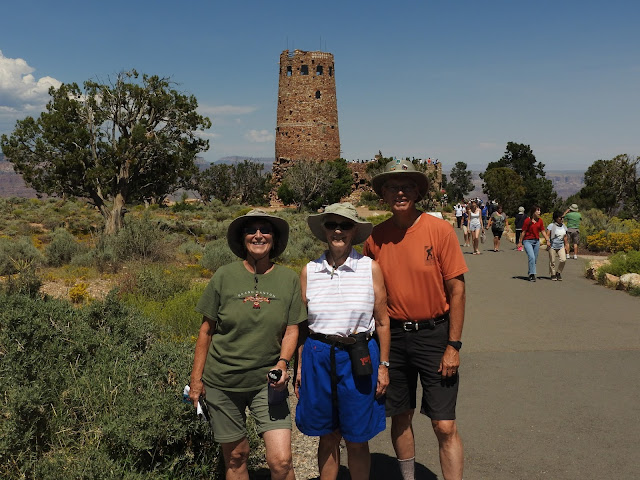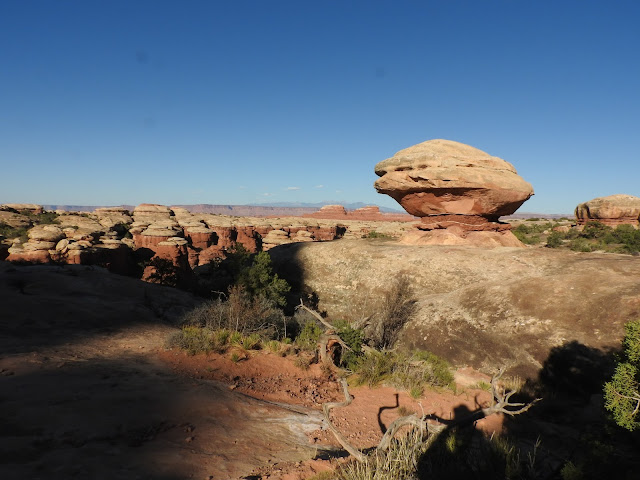Arches National Park has the largest concentration of natural arches in the world. Our first stop was a sunrise view of Delicate Arch, probably the most famous of all the arches in the park. It is featured on the Utah license plate.
Balanced Rock - nuff said.
There is a trail leading up to Turret Arch and 2 arches called North Window and South Window.
To give you some perspective of the size, check out the people standing inside North Window.
Then a primitive trail goes around to the back of North and South Windows. When combined, they're called The Spectacles. Perfect name!
This was one of my favorites - Double Arch. Several million years ago, it started with water accumulating in a pothole on the top of the rock outcropping. Then water doing what water does and
pulled by gravity, it found a weak spot in the rock. Some water went one way and some went the other, creating Double Arch which expanded over the millennia with further water and wind erosion. Quite a process. One arch is 144 feet wide and 112 feet high; the other arch is 67 feet wide and 86 feet high.
This arch is called Tunnel Arch.
And Pine Tree Arch. The distinct line between the white and red sandstone is similar to what we saw in Canyonlands NP.
Sand Dune Arch.
Susan reminded me that we were on the road home at this time last week, so we haven't even been home a week yet. Gotten a lot done, but more to do! I appreciate you sharing your time with me, checking out these incredible places to visit. From living in the Grand Canyon to these incredible sights of Canyonlands and Arches, our country is blessed with such beauty. I've said often (and I mean it), I hope you will make time to see and experience these (and the many other) national parks.
Great memories. I hope you have a great fall and look forward to hearing from you. Jordan

































































